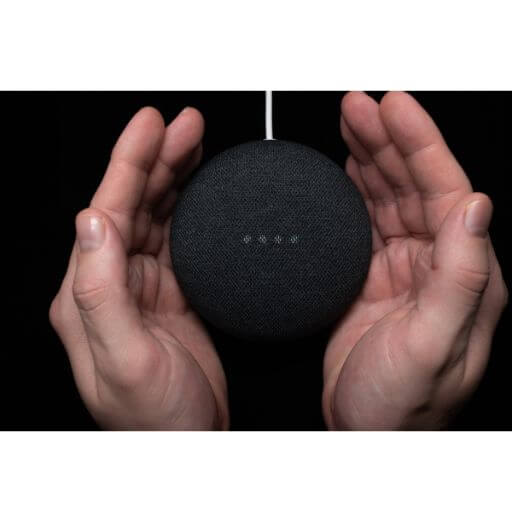
So you’ve been hearing about Nest and Google Nest, but you’re not quite sure if there’s a difference between the two. Well, you’re in the right place to find out! In this article, we will explore whether there is any distinction between Nest and Google Nest, and shed some light on the topic. Let’s get started!
Overview
Introduction
Nest and Google Nest are two prominent brands in the smart home industry that offer a wide range of innovative and interconnected devices. These devices are designed to make our lives more convenient, comfortable, and secure. In this article, we will explore the history of both brands, their products and features, integration with other devices, pricing, customer support, user feedback, competitors, and their future development.
Background
Nest was founded in 2010 by Tony Fadell and Matt Rogers with the goal of reinventing the thermostat and creating a more energy-efficient home. The company quickly gained popularity with its Nest Learning Thermostat, which revolutionized the way we control our home temperatures. In 2014, Google recognized the potential of Nest and acquired the company, aiming to enhance its smart home technology and expand its presence in the connected home market. This acquisition marked the beginning of an integration between Nest and Google, which eventually led to the creation of Google Nest.
Brand History
Founding of Nest
Nest was founded on the principles of creating innovative and easy-to-use products for the home. Tony Fadell, known as the “father of the iPod,” and Matt Rogers, a former Apple engineer, combined their expertise in consumer electronics and design to develop the Nest Learning Thermostat. The thermostat quickly gained popularity for its sleek design, intelligent learning capabilities, and ability to save energy.
Acquisition by Google
In January 2014, Google acquired Nest for $3.2 billion, recognizing the potential of the smart home market and the valuable technology developed by Nest. By joining forces, Google aimed to bring its expertise in machine learning and artificial intelligence to the connected home industry. The acquisition allowed Nest to benefit from Google’s vast resources and global reach, paving the way for further innovation and expansion.
Integration of Google and Nest
Following the acquisition, Nest started to collaborate closely with Google, integrating its products and services with Google’s ecosystem. This integration allowed users to control their Nest devices using Google Home speakers or through the Google Home app on their smartphones. Google’s voice assistant, Google Assistant, became an integral part of the Nest experience, enabling users to control their smart home devices using voice commands.
Introduction of Google Nest
In 2019, Google announced the merger of Nest and its home hardware team to form Google Nest. This move combined the strengths of both brands and brought their offerings under a unified identity. Google Nest continued to develop and improve its product line, expanding beyond thermostats to include cameras, doorbells, smart locks, alarms, speakers, displays, and a hub. The integration of Google’s technology and services with Nest’s expertise in smart home devices further enhanced the overall experience for users.

Product Range
Thermostats
Nest and Google Nest offer a range of thermostats designed to help you save energy and create a comfortable living environment. The flagship product, the Nest Learning Thermostat, utilizes machine learning algorithms to learn your preferences and automatically adjust the temperature accordingly. The Nest Thermostat E, on the other hand, provides a more affordable option with a simpler design while still offering energy-saving features.
Cameras
Google Nest offers a variety of indoor and outdoor cameras that provide advanced security features for your home. These cameras offer high-quality video, motion detection, and night vision capabilities. The Nest Cam Indoor and Nest Cam Outdoor are popular choices, allowing you to monitor your home from anywhere using the Google Nest app.
Doorbells
Google Nest’s video doorbells, such as the Nest Hello, allow you to see and speak to visitors at your door, even when you’re not at home. The doorbell features HD video, two-way audio, and facial recognition capabilities, ensuring you never miss an important delivery or visitor.
Smart Locks
Google Nest offers smart locks, such as the Nest Yale Lock, which allow you to control and monitor access to your home using your smartphone. These locks provide convenient keyless entry options and can be integrated with other Google Nest devices for enhanced security.
Alarms
Google Nest’s alarm systems, including the Nest Secure, offer comprehensive home security solutions. These systems include motion sensors, door/window sensors, and an alarm hub that connects and controls all the devices. The Nest Secure can be easily armed and disarmed using the Nest app or Google Assistant voice commands.
Speakers
Google Nest provides smart speakers, such as the Nest Audio and Nest Mini, which integrate with your smart home devices and offer high-quality audio playback. These speakers are powered by Google Assistant, allowing you to control your smart home devices, play music, and get answers to your questions using voice commands.
Displays
Google Nest Hub and Nest Hub Max are smart displays that combine the functionality of a digital assistant with a touchscreen interface. These devices allow you to control your smart home devices, view your calendar, stream videos, and make video calls, all with the help of Google Assistant.
Hub
The Google Nest Hub Max acts as a centralized hub, allowing you to control and manage all your Google Nest devices from one place. With its built-in camera, it also functions as a security camera and can be used for video calls.
Accessories
Google Nest offers a range of accessories to complement its product line, including additional sensors, mounts, and stands. These accessories help you customize and optimize the functionality of your Google Nest devices.
Features and Functionality
Similarities
Both Nest and Google Nest devices offer intuitive interfaces and seamless integration with each other. They can be controlled via the Google Home app or using voice commands through Google Assistant. Many devices also feature machine learning capabilities, enabling them to adapt to your preferences and automate tasks for a more convenient experience.
Differences
One notable difference between Nest and Google Nest devices is the branding and packaging. While Nest devices were initially sold under the Nest brand, Google Nest devices now bear the Google Nest branding. However, the functionality and features of the devices remain largely the same. Additionally, Google Nest devices often incorporate more advanced technologies and improved integration with other Google services.

Integration with Other Devices
Google Assistant
One of the key advantages of Google Nest devices is their seamless integration with Google Assistant. Google Assistant allows you to control your smart home devices using voice commands, whether it’s adjusting the temperature, turning on lights, or playing music. With Google Assistant, you can also create routines that automate multiple actions with a single command, making your daily routines even more convenient.
Smart Home Compatibility
Google Nest devices are designed to work seamlessly with other smart home devices and platforms. They are compatible with a wide range of smart home systems, including popular ones like Amazon Alexa, Apple HomeKit, and Samsung SmartThings. This integration allows you to create a more connected and unified smart home ecosystem, controlling multiple devices through a single interface.
Pricing
Individual Product Pricing
The pricing of Nest and Google Nest devices varies depending on the specific product and its features. Generally, Nest devices tend to be more expensive compared to other brands in the market due to their advanced technology and premium build quality. However, with the introduction of Google Nest, there has been a greater emphasis on offering more affordable options without compromising on quality or functionality.
Bundled Packages
Google Nest also offers bundled packages that include multiple devices, providing a comprehensive solution for your smart home needs. These packages often offer cost savings compared to purchasing individual devices separately. Bundled packages may include products such as a thermostat, camera, and doorbell, allowing you to create a fully integrated and secure home environment.
Subscription Services
In addition to the individual product purchases, Google Nest offers optional subscription services to enhance your smart home experience. These services may include features like extended video storage, advanced motion detection, and professional monitoring for your security devices. It is important to carefully consider the pricing and features of these subscriptions to determine if they align with your specific needs and budget.

Customer Support and Warranty
Support Channels
Google Nest provides comprehensive customer support through various channels, including online FAQs, community forums, and direct support via phone or chat. The online resources offer detailed information on product setup, troubleshooting, and general usage tips. The support team is readily available to assist customers with any issues or questions they may have, ensuring a smooth experience throughout the lifetime of the product.
Warranty Policies
Google Nest products typically come with a limited warranty that covers manufacturing defects and malfunctions. The duration of the warranty varies depending on the specific product and region. It is advisable to review the warranty terms and conditions provided by Google Nest to understand the coverage and any potential limitations. Additionally, extended warranty options may be available for purchase to provide further protection and peace of mind.
User Feedback and Reviews
Common Feedback
Users generally praise Nest and Google Nest devices for their sleek design, user-friendly interfaces, and seamless integration with other smart home devices. The advanced features, such as machine learning capabilities and voice control, are often highlighted as key advantages. However, some users have reported occasional connectivity issues or technical glitches, although these experiences appear to be rare and isolated.
Pros and Cons
The pros of using Nest and Google Nest devices include their intuitive interfaces, energy-saving capabilities, and compatibility with other smart home platforms. The extensive product range also allows users to find devices that suit their specific needs. However, some potential drawbacks include the higher price range compared to other brands and occasional technical issues that may require troubleshooting.
Competitors and Market Position
Comparison with Other Brands
Nest and Google Nest face competition from other prominent brands in the smart home industry, such as Amazon’s Ring, Arlo, and Ecobee. These brands offer similar products and features, providing consumers with a variety of options to choose from. The key differentiators for Nest and Google Nest are their integration with Google Assistant and the overall Google ecosystem, as well as the emphasis on energy efficiency and intelligent learning.
Market Share
Nest and Google Nest have established themselves as key players in the smart home market. While market share numbers can fluctuate, especially with the entry of new competitors, the popularity and recognition of Nest and Google Nest devices have helped them gain a significant presence in the connected home industry.
Future Development
Upcoming Products and Features
Google Nest continues to innovate and develop new products and features to meet the evolving needs of smart home enthusiasts. These may include updated versions of existing devices with enhanced capabilities, as well as entirely new products designed to bring further convenience, security, and energy efficiency to the home.
Industry Trends
The smart home industry is constantly evolving, with new technologies and trends shaping the market. Some key trends include the increasing popularity of voice assistants, the integration of smart home devices with artificial intelligence and machine learning, and the growing importance of interoperability between various smart home platforms. Google Nest is likely to adapt to these trends and continue to play a significant role in shaping the future of the smart home industry.
In conclusion, Nest and Google Nest offer a comprehensive range of smart home devices and services that cater to a wide range of needs and preferences. The integration of Google’s technology and services with Nest’s expertise in smart home devices has resulted in a powerful combination that brings convenience, security, and energy efficiency to our homes. As these brands continue to evolve and innovate, we can expect even more exciting products and features that will enhance our smart home experiences.
